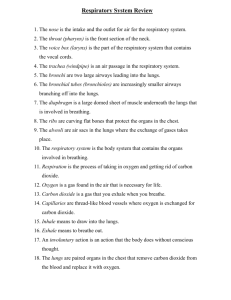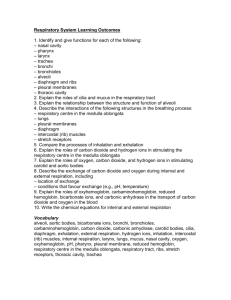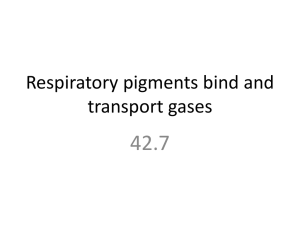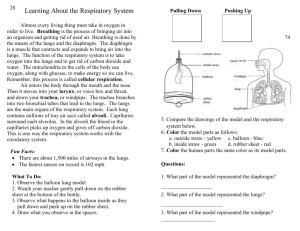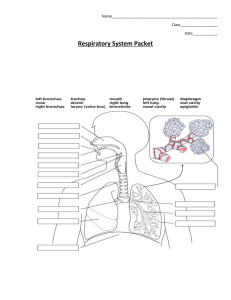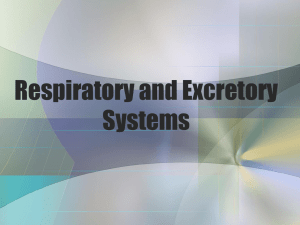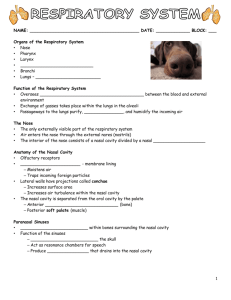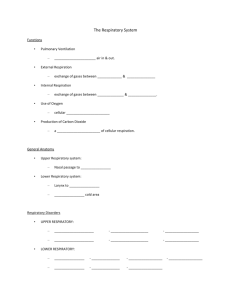Chapter 16
advertisement
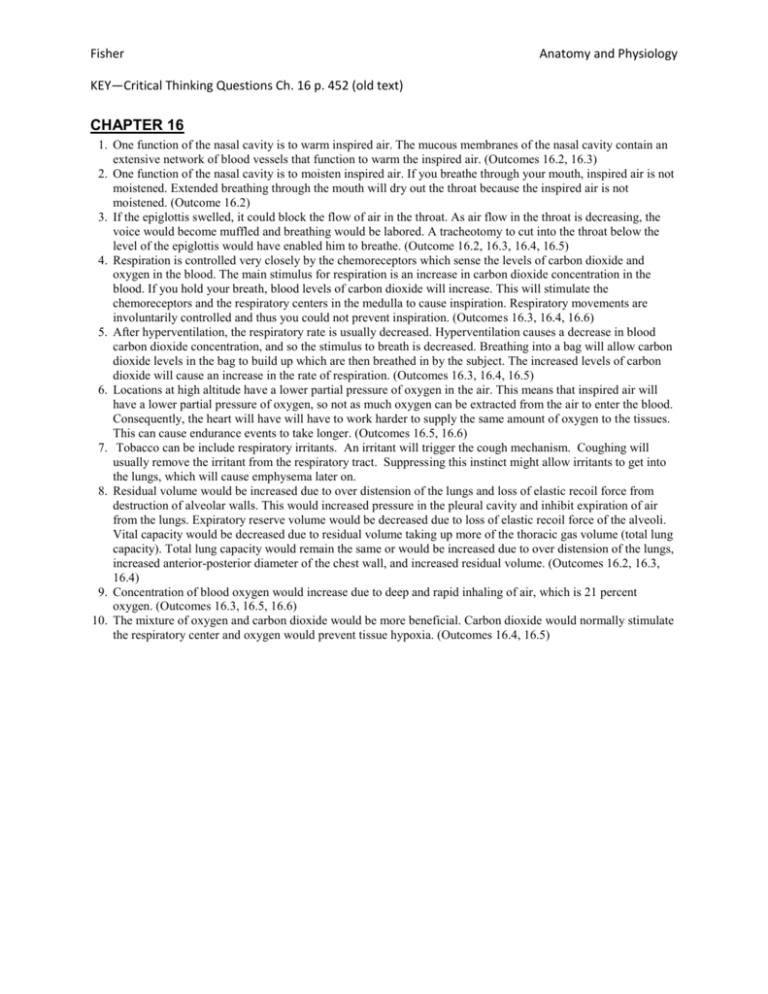
Fisher Anatomy and Physiology KEY—Critical Thinking Questions Ch. 16 p. 452 (old text) CHAPTER 16 1. One function of the nasal cavity is to warm inspired air. The mucous membranes of the nasal cavity contain an extensive network of blood vessels that function to warm the inspired air. (Outcomes 16.2, 16.3) 2. One function of the nasal cavity is to moisten inspired air. If you breathe through your mouth, inspired air is not moistened. Extended breathing through the mouth will dry out the throat because the inspired air is not moistened. (Outcome 16.2) 3. If the epiglottis swelled, it could block the flow of air in the throat. As air flow in the throat is decreasing, the voice would become muffled and breathing would be labored. A tracheotomy to cut into the throat below the level of the epiglottis would have enabled him to breathe. (Outcome 16.2, 16.3, 16.4, 16.5) 4. Respiration is controlled very closely by the chemoreceptors which sense the levels of carbon dioxide and oxygen in the blood. The main stimulus for respiration is an increase in carbon dioxide concentration in the blood. If you hold your breath, blood levels of carbon dioxide will increase. This will stimulate the chemoreceptors and the respiratory centers in the medulla to cause inspiration. Respiratory movements are involuntarily controlled and thus you could not prevent inspiration. (Outcomes 16.3, 16.4, 16.6) 5. After hyperventilation, the respiratory rate is usually decreased. Hyperventilation causes a decrease in blood carbon dioxide concentration, and so the stimulus to breath is decreased. Breathing into a bag will allow carbon dioxide levels in the bag to build up which are then breathed in by the subject. The increased levels of carbon dioxide will cause an increase in the rate of respiration. (Outcomes 16.3, 16.4, 16.5) 6. Locations at high altitude have a lower partial pressure of oxygen in the air. This means that inspired air will have a lower partial pressure of oxygen, so not as much oxygen can be extracted from the air to enter the blood. Consequently, the heart will have will have to work harder to supply the same amount of oxygen to the tissues. This can cause endurance events to take longer. (Outcomes 16.5, 16.6) 7. Tobacco can be include respiratory irritants. An irritant will trigger the cough mechanism. Coughing will usually remove the irritant from the respiratory tract. Suppressing this instinct might allow irritants to get into the lungs, which will cause emphysema later on. 8. Residual volume would be increased due to over distension of the lungs and loss of elastic recoil force from destruction of alveolar walls. This would increased pressure in the pleural cavity and inhibit expiration of air from the lungs. Expiratory reserve volume would be decreased due to loss of elastic recoil force of the alveoli. Vital capacity would be decreased due to residual volume taking up more of the thoracic gas volume (total lung capacity). Total lung capacity would remain the same or would be increased due to over distension of the lungs, increased anterior-posterior diameter of the chest wall, and increased residual volume. (Outcomes 16.2, 16.3, 16.4) 9. Concentration of blood oxygen would increase due to deep and rapid inhaling of air, which is 21 percent oxygen. (Outcomes 16.3, 16.5, 16.6) 10. The mixture of oxygen and carbon dioxide would be more beneficial. Carbon dioxide would normally stimulate the respiratory center and oxygen would prevent tissue hypoxia. (Outcomes 16.4, 16.5)

